It’s perhaps unfortunate that one of Taipei city’s most renowned landmarks is a building that ceased to be the world’s tallest years ago, while another signature sight of the capital is a grandiose monument to a political leader regarded as a dictator. A third is a museum showcasing the Chinese cultural treasures seized by his soldiers before their retreat from China to Taiwan.
In fact, while Taipei 101, Chiang Kai-shek Memorial Hall and the National Palace Museum draw the crowds, the capital city has plenty to offer visitors in search of Taiwan’s less recent history.
Many fine buildings in the city date back to the Japanese colonial era. For older historic relics, you’d do better heading to Lukang or Tainan, but Taipei (or rather the Taipei suburb of Banciao) boasts an amazing gem: by far the finest surviving example of a Qing dynasty Chinese garden in all Taiwan.

Photo: Richard Saunders
TAIWAN’S FOUR GREAT GARDENS
The classical Chinese garden is nothing like its Western counterparts, or the Japanese version for that matter. Visitors to China’s Suzhou (a couple of hours by train west of Shanghai) will know just how wonderfully distinctive and scenic they can be.
If you can’t get to Suzhou to see a couple of the eight UNESCO-listed masterpieces there, Taiwan has (or rather had) four magnificent examples, which are often bracketed together and called the Four Great Gardens of Taiwan (台灣四大名園). They form a rare and fascinating look back at a long-vanished way of life for the elite in Taiwan over a century ago.
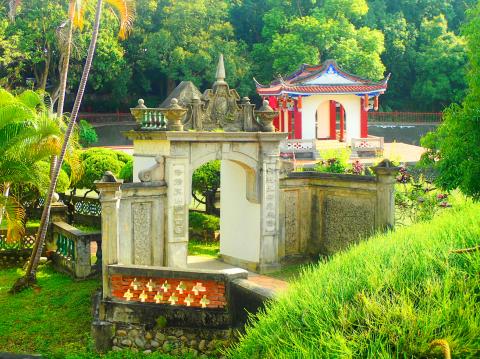
Photo: Richard Saunders
The finest of the four by far is the Lin Family Mansion and Garden in Banciao, New Taipei City. This marvelous oasis of classical Chinese beauty would be a worthwhile stop on any Taiwan visit even if it was less easy to reach, but lying less than 10 minutes’ walk from New Taipei City’s Fuzhong MRT Station (府中), Exit 1, it’s a well-nigh compulsory one.
The remaining three gardens (in Hsinchu, Taichung and Tainan) are smaller, much less well-known and not as well preserved, having fallen victim to earthquake damage or neglect. In fact, the fourth, Hsinchu’s Beiguo Garden, is no more; the last remnants were destroyed in the 1970s and today shops and residences stand in its place. Of the other two, Lai Garden in Tainan is the more notable, and well worth a visit, especially by visitors willing to imagine how wonderful it would have been in its heyday.
Wufeng LIN Family Mansion
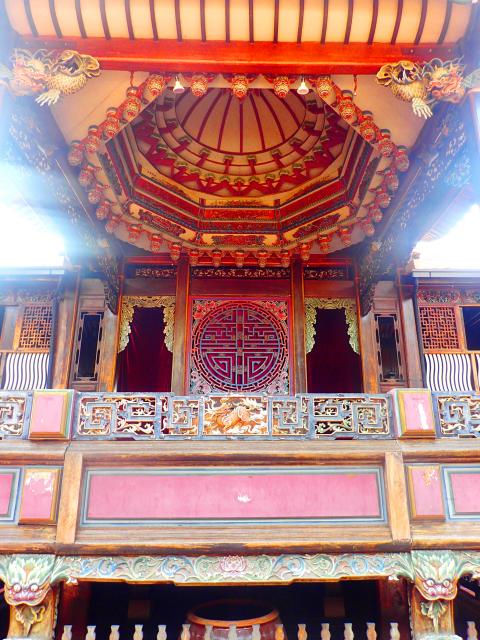
Photo: Richard Saunders
Another Lin Family (not related, it seems, to the Banciao clan) from Wufeng (霧峰), southeast of Taichung, was responsible for this beautiful garden, of which now only a part remains.
The Wufeng Lins were a huge family, and their residence (霧峰林家宅園) was established in the 1850s, but slowly expanded over the next 50 years. Today the house and garden, which has been called the largest and finest traditional residential compounds in Taiwan, consists of two independent complexes: the Upper (頂厝) and Lower (下厝) Houses, and, 400m southeast, Lai Garden (萊園).
The house and garden were both severely damaged in the 921 Earthquake, but following a lengthy restoration, much of the complex is now open to the public. The Lower House is the highlight of a visit, and most visitors make a beeline for its stunning Great Flower Hall (大花廳) and the florid theater across the courtyard from it.
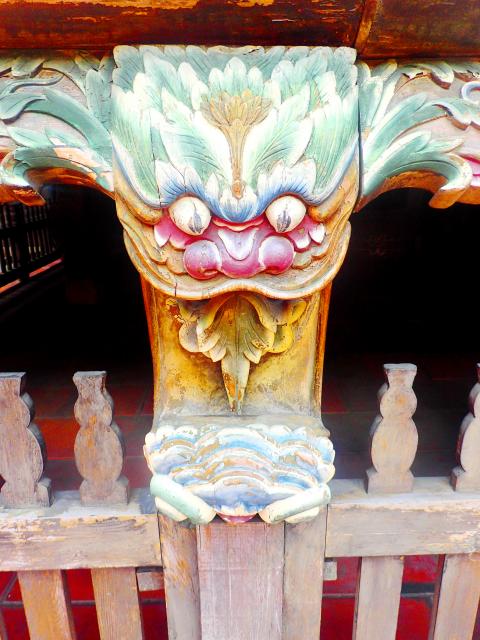
Photo: Richard Saunders
Nearby, Lai Garden now forms part of a school campus, but is freely open to the public during daylight hours. The garden (established in 1893) was once famed for its “10 scenic spots,” and is entered by crossing the first of these, the small Cotton-tree Bridge (木棉橋), although a concrete replacement now crosses the stream.
(Incidentally the 921 Earthquake Museum is just 3km to the south of the garden, at the terminus of the same bus route. It’s well worth making a day of it, and certainly puts into perspective the magnitude of the temblor that devastated those beautiful historic treasures nearby.)
Over the bridge is an attractive carved gate, and through that the main landmarks of the garden: the attractive Five-Cassia Tower (五桂樓) and the Pool of Small Habits (小習池) which takes up much of the surviving part of the garden. In the lake is Lychee Isle (荔枝島), connected to the bank by an ornamental bridge, and on it is an ornamental covered stage called the Flying Goblet Drunken Moon Pavilion (飛觴醉月亭).
Sadly the garden was decimated by the 921 Earthquake, and most of the structures seen today are shiny new replicas of the originals, although very attractive nonetheless.
Richard Saunders is a classical pianist and writer who has lived in Taiwan since 1993. He’s the founder of a local hiking group, Taipei Hikers, and is the author of six books about Taiwan, including Taiwan 101 and Taipei Escapes. Visit his Web site at www.taiwanoffthebeatentrack.com
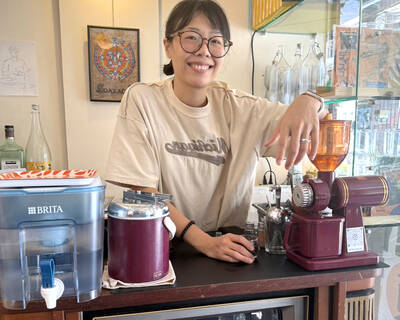
Cheng Ching-hsiang (鄭青祥) turned a small triangle of concrete jammed between two old shops into a cool little bar called 9dimension. In front of the shop, a steampunk-like structure was welded by himself to serve as a booth where he prepares cocktails. “Yancheng used to be just old people,” he says, “but now young people are coming and creating the New Yancheng.” Around the corner, Yu Hsiu-jao (饒毓琇), opened Tiny Cafe. True to its name, it is the size of a cupboard and serves cold-brewed coffee. “Small shops are so special and have personality,” she says, “people come to Yancheng to find such treasures.” She
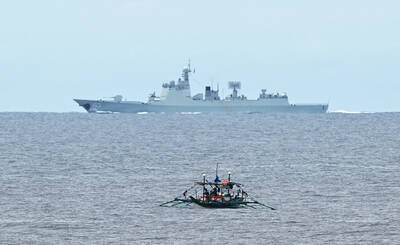
Late last month Philippines Foreign Affairs Secretary Theresa Lazaro told the Philippine Senate that the nation has sufficient funds to evacuate the nearly 170,000 Filipino residents in Taiwan, 84 percent of whom are migrant workers, in the event of war. Agencies have been exploring evacuation scenarios since early this year, she said. She also observed that since the Philippines has only limited ships, the government is consulting security agencies for alternatives. Filipinos are a distant third in overall migrant worker population. Indonesia has over 248,000 workers, followed by roughly 240,000 Vietnamese. It should be noted that there are another 170,000

In July of 1995, a group of local DJs began posting an event flyer around Taipei. It was cheaply photocopied and nearly all in English, with a hand-drawn map on the back and, on the front, a big red hand print alongside one prominent line of text, “Finally… THE PARTY.” The map led to a remote floodplain in Taipei County (now New Taipei City) just across the Tamsui River from Taipei. The organizers got permission from no one. They just drove up in a blue Taiwanese pickup truck, set up a generator, two speakers, two turntables and a mixer. They

Hannah Liao (廖宸萱) recalls the harassment she experienced on dating apps, an experience that left her frightened and disgusted. “I’ve tried some voice-based dating apps,” the 30-year-old says. “Right away, some guys would say things like, ‘Wanna talk dirty?’ or ‘Wanna suck my d**k?’” she says. Liao’s story is not unique. Ministry of Health and Welfare statistics show a more than 50 percent rise in sexual assault cases related to online encounters over the past five years. In 2023 alone, women comprised 7,698 of the 9,413 reported victims. Faced with a dating landscape that can feel more predatory than promising, many in